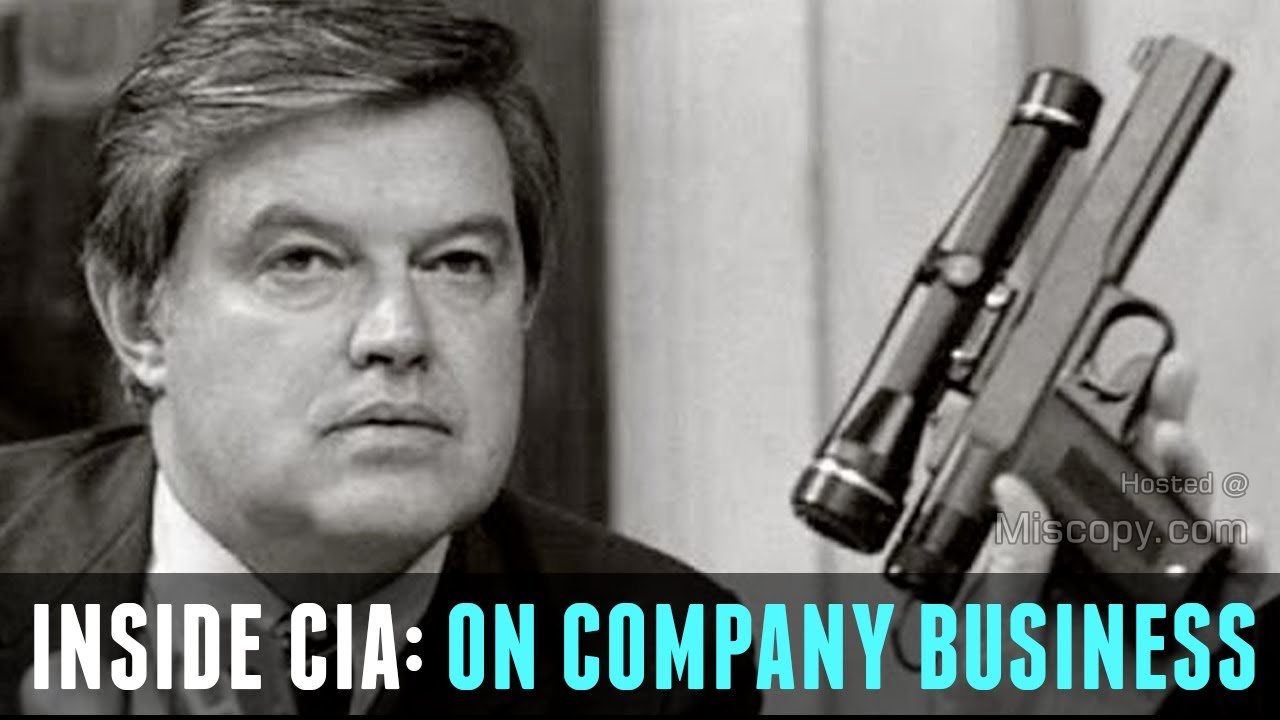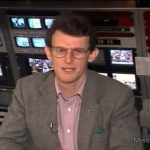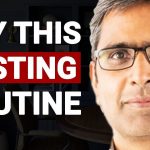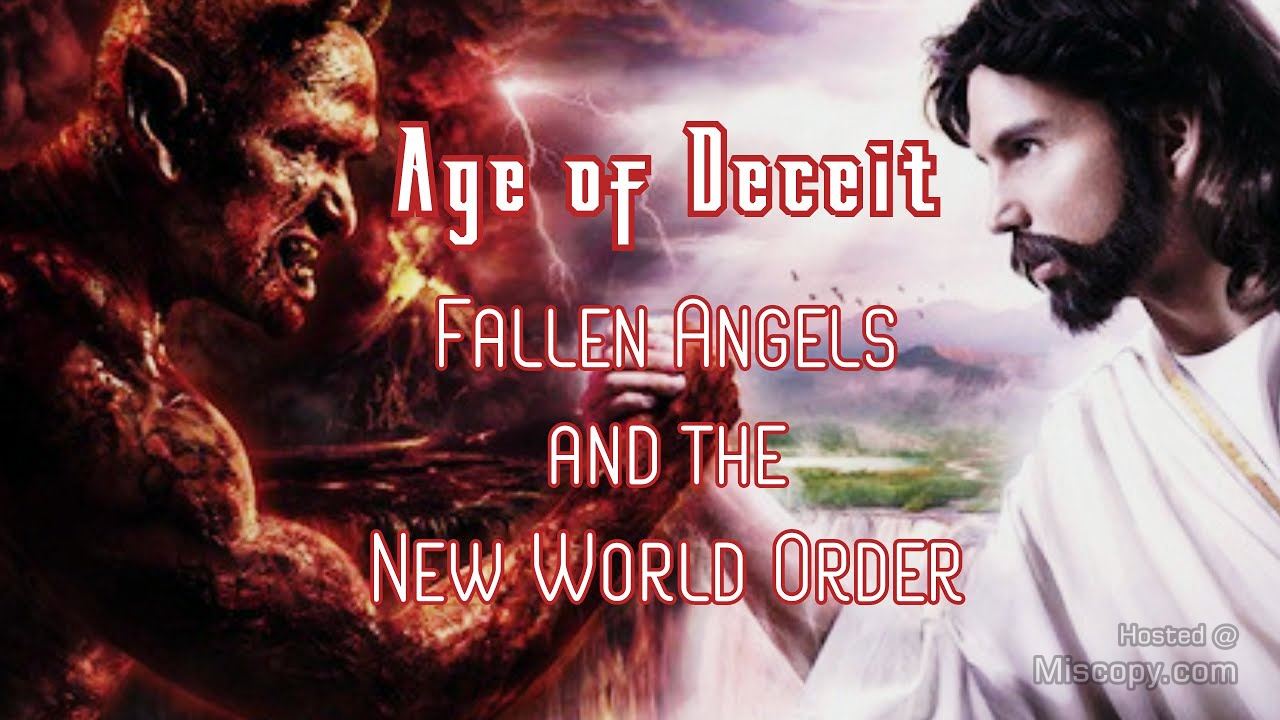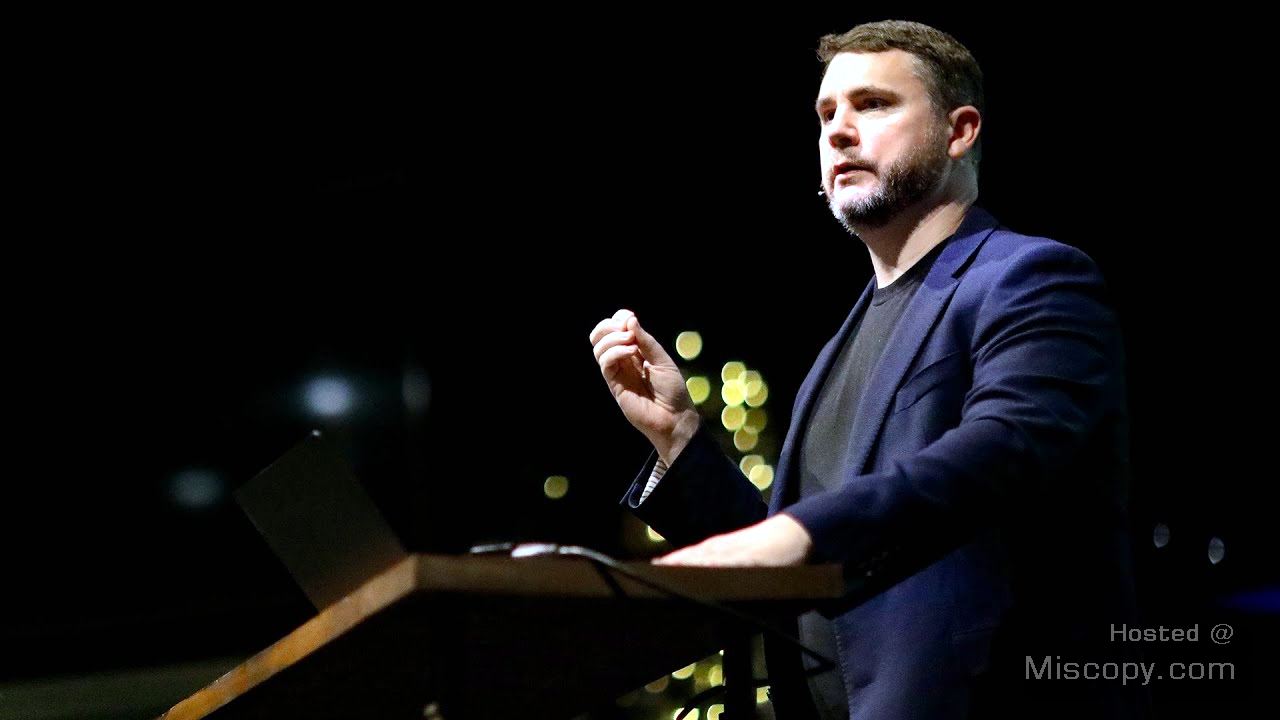On Company Business is a 1980 documentary on the CIA by the late Allan Francovich. The documentary is a comprehensive look at the role of the CIA in various covert operations during and after WWII. The video covers several topics, including the economic rationale behind the Marshall Plan, the agency’s involvement in supporting democratic forces in Europe, and their use of front organizations to influence events in various countries. It also covers the tensions between Fidel Castro’s Cuba and the United States during the Cold War, the failed Bay of Pigs invasion, and the various assassination attempts against Castro.
The documentary also delves into the CIA’s involvement in the assassination of Congo’s first Prime Minister, Patrice Lumumba, and how they attempted to assassinate him with poison. Throughout the video, former CIA officers discuss their experiences working for the agency, the risks involved, and the need for secrecy in their operations.
The video also provides an in-depth look at the CIA and its involvement in Latin American politics during the Cold War. The CIA is shown to have assisted multinational corporations, engaged in propaganda and political warfare, trained labor organizers against communist movements, and supported military coups. Torture and assassination were also used in the agency’s efforts to combat communism, including the training of death squads and torture techniques in Latin America. The video also discusses specific incidents, such as the Bay of Pigs and the Chilean political situation, to illustrate the CIA’s activities during this period.
In the last section the video discusses the CIA’s involvement in various foreign conflicts, including in Chile and Angola. It highlights the agency’s attempts to manipulate events to further American interests, often at the expense of human rights and democratic values. The documentary also delves into the relationship between the CIA and American news media, with evidence suggesting that the agency planted stories abroad that eventually made their way to the United States. The video presents various individuals, including former CIA agents, who express differing opinions on the agency’s actions and the ethics of clandestine operations. Overall, the documentary raises questions about the role and accountability of US intelligence agencies in shaping foreign policy and their impact on global relations.
At 00:00:00 various individuals including former CIA agents discuss their experiences working for the CIA and the nature of its operations. They discuss covert tactics and weaponry such as poisons and electric guns. One former agent also speaks about being recruited under the guise of working for the Department of Defense before discovering that he was actually working for the CIA. Others discuss the risk of having a secret organization like the CIA, but highlight the necessity of having some sort of intelligence service. The documentary also touches on the history of covert operations during wartime.
At 00:05:00 the video discusses the economic rationale behind the Marshall Plan and the CIA’s role in combatting left-wing political organizations in Europe that opposed the plan. After World War II, there was a fear that the return to unemployment of the depression could be averted only by creating foreign markets for overproduction. Thus, the Marshall Plan was established to provide economic support to the free nations of Europe. However, left-wing political parties in Europe, especially in France and Italy, who were the backbone of the resistance to fascism, opposed the plan, knowing that reconstruction would bring economic and political dependence on the United States. Consequently, the CIA was partly set up to combat on a political warfare basis against the efforts of these parties to impede the success of the Marshall Plan.
At 00:10:00 the speaker discusses the CIA’s support of democratic forces in Europe and their opposition to fascist and right-wing groups. They also talk about the Cold War and how the fear of communist influence was widespread at the time, with Senator McCarthy fueling conspiracy theories about Soviet spies in the State Department. The speaker mentions that the institutions of power which are penetrated include political parties, security services, youth and student movements, cultural organizations, and even professional societies. To combat this, the CIA funded media outlets such as Radio Free Europe and Radio Liberty to spread the message of freedom and provide specific instructions for the Russian people on working towards their liberation under the noses of the Soviet secret police.
At 00:15:00 it is discussed how the CIA used front organizations to influence events in various countries after World War II. Examples of organizations that were set up by the CIA include the World Assembly of Youth and Coordinating Secretariat of National Unions of Students, which were used to control and influence their members. The CIA also helped to found the International Confederation of Free Trade Unions. The video mentions Irving Brown, who received money from the CIA and distributed it to labor operations, and how the CIA provided financial aid to French unions during a general strike. Overall, the CIA’s involvement in supporting various organizations was considered patriotic during the 1950s.
At 00:20:00 the documentary discusses the opposition that the communists had towards the Marshall Plan, which was providing economic aid to support freedom and France. The communists attempted to defeat the plan via political strikes called by trade unions and political elements. The US government consequently called upon Irby Brown and Jacob Stone to break the strikes, and they used the help of the Corsican mafia, particularly the racketeer name Fairy Pazhani, who ended up becoming a paid agent of Central Intelligence. The documentary also mentions a conversation between the acting labor attache and George Meany, the Secretary of the American Federation of Labor, where the former gave his views on how unpopular Irving Dunne was and how much damage he was doing to free labor and discrediting people.
At 00:25:00 it is revealed that the purpose of political and front organizations in Europe after World War II was to fill the political vacuum with forces that would be favorable to close relations with the United States and to preclude any left-wing participation in political life. This was achieved through support for anti-communist movements, intervention in the affairs of other countries, and the support of half-assed dictators, military print, or oligarchy that promised to maintain the status quo beneficial to the interests of the United States and its corporations.
At 00:30:00 the documentary delves into the tensions between Fidel Castro’s Cuba and the United States during the Cold War. The US government was concerned with the spread of communism, and viewed Fidel Castro as a threat to its interests. However, some within the CIA believed that the US should not be attempting to overthrow or assassinate national liberation leaders like Castro, but rather work with them. Nonetheless, tensions boiled over when Castro announced the expropriation of US-owned property in Cuba, leading to a break in diplomatic relations and the events that followed. The documentary explores the CIA’s involvement in various operations to undermine and overthrow Castro, including the attempted assassination and sabotage.
At 00:35:00 of the CIA documentary, the necessity of keeping operations secret from public debate is discussed, citing the infamous Bay of Pigs fiasco as an example of when a lack of secrecy led to failure. The documentary includes footage and accounts of the failed invasion of Cuba by human revolutionary troops and the heated denials of aggression made by the US. A former CIA officer stationed in Cuba recounts his personal connections with some of the participants of the Bay of Pigs landing force and his recommendation of individuals for the operation. The epilogue shows exiled family members desperately seeking news of their loved ones while Fidel Castro threatens death for the invaders and President Kennedy seeks bipartisan support for the situation.
At 00:40:00 several individuals discuss the possibility of President Kennedy and Bobby Kennedy knowing about assassination plans against Fidel Castro. While there is no definitive answer, it is clear that many high-level officials within the U.S. government were aware of the constant actions being taken against Cuba, including attempts to blow up power plants and sugar mills. However, no one in the government approved of any CIA-led assassinations, and the head of the agency at that time stated that he had no knowledge of such plans. It is unlikely that any President would overtly order an assassination, but rather issue non-directed orders to solve problems in Cuba.
At 00:45:00 the video discusses various attempts by the CIA to get rid of Fidel Castro, including the involvement of organized crime figures such as John Roselli and Sam Giancana. It is revealed that William K. Harvey was in touch with Roselli during an alleged plot to transport poison pills from Florida to Havana; though there was no evidence that this plot ever materialized. Meanwhile, the CIA’s involvement in operations such as these typically did not extend beyond the planning stage, with the work being carried out by contract agents, gangsters, and mercenaries. However, there are reports that at the time of JFK’s assassination a CIA officer was meeting with a Cuban agent in Paris to provide an assassination device to kill Castro.
At 00:50:00 there is a discussion about the CIA’s involvement in potentially attempting to assassinate Fidel Castro, using methods like giving an agent a device that kills. The committee questions the morality and safety of such covert operations, especially when involving dangerous organizations like the Mafia. The CIAers are quick to note that it is a tricky business, involving evaluations by good intelligence officers and policymakers. The video also shows some historical events, such as the capture of former Congo premier Patrice Lumumba and the CIA’s training camp at Camp Perry.
At 00:55:00 former CIA officers discuss the agency’s involvement in the assassination of Congo’s first Prime Minister, Patrice Lumumba, and how they attempted to assassinate him with poison. The operation ultimately failed, and the CIA resorted to convincing Mobutu to have Lumumba killed. The officers also explain how the agency recruited and worked with agents, including how they sometimes targeted people who were a little devious. They also discussed the risks for intelligence officers who attempt to recruit assets to serve the interests of the US rather than their own country.
At 01:00:00 the speaker discusses how the CIA would check the names of potential Venezuelan employees of Creole Petroleum Company against their computerized files for any indication of left-wing political sympathies or membership. This was an example of the CIA assisting a multinational corporation. The CIA was also engaged in propaganda and political warfare throughout Latin America to create the optimum operating conditions for multinational corporations. They created fear and hysteria around the growth of left-wing political organizations, such as the communist organizations, and used forged and false documents to bring about a timely effect in certain areas.
At 01:05:00 a CIA officer talks about how they planted a report in a toothpaste tube to frame a left-wing organization leader who had gone to Cuba on a trip. The planted report in the toothpaste tube was found by the authorities in his luggage upon his return, which led to his immediate arrest and the eventual establishment of a military Quinta. Additionally, the video discusses the CIA’s efforts to drum up support for the Venezuelan charge that Castro was supplying arms to guerrillas in Venezuela by influencing the Argentine government. The video also talks about Kennedy’s policy towards Cuba and how the issue between communism and democracy will eventually be settled by the ordinary working people of different nations.
At 01:10:00 a man who worked for the CIA recounts how he was called to Washington and interviewed for a position in Brazil. His position was supposedly going to be for a phony organization known as the Postal Telegraph California International, which was later revealed as being under the CIA. He was trained on how to organize against communists, and he eventually became fanatical about it. He was later accused of collaborating with the CIA and did not provide a response to the accusation.
At 01:15:00 it is revealed that the American Institute for Free Labor Development was established during the Kennedy period, and it was a joint venture between American trade unions and multinational corporations operating in Latin America. The organization’s cover was education and social projects like developing cooperatives and housing, but the real reason was to create organizers who could go back to their industries and spend time doing nothing but organizing. The organization trained Democratic trade unionists, and it was hoped that they could go back to their respective countries and put into practice some of the things that they learned. However, the organization’s board of directors had prominent American employers, such as Peter Grace, and the list of corporations that contributed included American corporations that had never paid decent wages or provided good working conditions in the United States.
At 01:20:00 it is discussed how the CIA would train and support labor organizers in Latin American countries to turn against the communist movements and prevent them from taking over unions and other organizations. The training included sending people to Front Royal for courses on organizing. The efforts resulted in the overthrow of the Gula regime in Brazil, and the CIA’s involvement was suspected by both the communists and their opponents. The AFL-CIO denied receiving any money from the CIA, and the organization’s books were open to the public. The CIA did not want any records kept to avoid any information leaks.
At 01:25:00of the CIA documentary, it is revealed that the organization led a propaganda campaign and disinformation strategy in Brazil to justify a military coup in 1964. The campaign emphasized the threat of communism and rallied support from women and religious groups. The CIA also supported the coup by providing arms and even naval assistance. The exiled Brazilian president, João Goulart, had sympathies with Fidel Castro and his regime was ultimately overthrown by a bloodless military coup. Many Communist supporters were jailed and eliminated from the labor movement, while the Brazilian economy suffered as a result of the regime change.
At 01:30:00 of the video, the Bay of Pigs is mentioned as a turning point in the CIA’s involvement in training and expanding foreign police forces to fight communism. Byron Angle, a member of the CIA at the time, was recruited to expand and lead this program. A third of the police training was devoted to making them aware of the communist menace. As a result, many countries’ police forces ended up using torture, including methods learned from the United States, when interrogating suspected communists. Victims, including political exiles in Europe, reported being tortured with US Army Field telephones, and they were often subjected to cruel forms of torture with no embarrassment from the torturers.
At 01:35:00 the video discusses the use of torture as a means of interrogation during the Cold War and its ineffectiveness in getting information. The CIA officer interviewed explains that torture is a necessity in the system due to the continued resistance of leftist groups. The video also covers the unsuccessful attempts of the CIA to weaken the left in Uruguay during the 1960s and the promotion of repression during that period. The video then details the story of Dan Mitrione, a CIA officer who worked in Uruguay to improve police intelligence capabilities. Mitrione’s use of torture as an interrogation technique, such as the use of thin wires, is described in detail.
At 01:40:00 it is revealed that the agency was involved in the training of death squads and torture techniques in Latin America during the 1970s. The program school in Los Fresnos, Texas was used to train students from Latin America how to construct bombs and destroy radio stations and cars, with the CIA running the courses. The agency also maintained a subversive control watchlist that included detailed information on left-wing political activists, which would be handed over to local police or military authorities for action. The death squads were then sent to Argentina where several leaders were kidnapped and assassinated, including Hector Gutierrez and Senator Selmeri Collini, prompting the victims’ families to register with police and flee the country.
At 01:45:00 it is revealed that the murder of political leaders in Uruguay, including Mitrione, was part of an international campaign that included assassinations of political figures in Chile, Bolivia, and Europe. Mitrione’s presence and actions in Uruguay were part of a CIA advisory program that led to an increase in torture and brutality. Mitrione was eventually kidnapped and killed, and while the US government denied involvement, the murder highlighted the inhumanity of terrorism.
At 01:50:00 the video discusses the CIA’s involvement in Chile during the 1960s and 1970s. The CIA provided millions of dollars in assistance to various political parties to strengthen them against the agenda supported by Castro. The goal was to prevent IND from being elected president of Chile in 1964 and to elect the Christian Democrats instead. However, after IND was elected in 1970, the CIA launched a plot to stop his inauguration and offered $250,000 for a constitutional ploy to block his election. Nixon ordered the CIA to proceed with the plot with the Chilean military to try to thwart the inauguration of IND.
At 01:55:00 the speaker discusses his efforts to prevent a plot with the Chilean military, which included sending cables to the White House and State Department. The speaker discovered that the CIA had countermanded his specific orders and was secretly plotting with an extreme right-wing group called Patria Libertad, which had been put off limits by him. He also speaks of his meeting with Kissinger and the President where he accidentally touched a sensitive nerve and learned of a plot to eliminate certain individuals in Chile. The speaker suggests that the Chile situation warrants high priority for the entire administration, and everything should be done quietly.
At 02:00:00 of the documentary, it is discussed how the CIA attempted to create a financial squeeze on Chile, preventing the government from governing efficiently. By financing truck drivers, the CIA created conditions that would lead to right-wing military leaders intervening, restoring national order, and appealing to those who seek peace. However, this peace is often the peace of the grave for many people, and it didn’t deter Chilean President Allende from standing up for the will of the majority of Chile.
At 02:05:00 the video provides a collection of transcripts that detail the events surrounding the coup against Salvador Allende’s government in Chile. Orlando Letelier, a former Chilean ambassador to the US, recounts how he was informed of the coup in the early morning hours and how the military demanded that Allende surrender. The video also features commentary from US officials who express regret for the loss of life in Chile but also express that the coup was an internal affair. The aftermath of the coup is also explored, including the torture of hundreds of people in the Air Force Academy basement.
At 02:10:00 various individuals discuss the dilemma faced by those involved in clandestine CIA operations in Latin America, as well as the potential conflict between US and Latin American interests. The video also features a clip of former Secretary of State Henry Kissinger testifying about US policy towards Chile during a period of political unrest. The Americans defend their actions as being in the national interest, but there is growing public concern and moral dilemmas regarding the ethics of such actions.
At 02:15:00 of the CIA documentary, excerpts of interviews and congressional hearings are shown discussing the oversight function of the US Congress. It is revealed that the Congress had failed in its duty to oversee the executive branch of government and, in particular, the CIA. Various committees and subcommittees of Congress were tasked with oversight of the intelligence community and its operations. However, it was common practice for the intelligence community to brief only specific members of Congress rather than the entire committee, and often they would not pass on the information to the full committee. Some senators even expressed that they did not want to know certain things. Despite this, the CIA continued to involve itself in foreign conflicts, such as by flying arms to Angola, which would lead to further criticism of the agency.
At 02:20:00 several individuals are questioned about the possible involvement of the United States in the war in Angola. While some deny any knowledge, others admit to receiving CIA funds and support for their activities in Angola. The legality of this involvement is called into question, as the War Powers Act requires that Congress be informed before the commitment of the United States Armed Forces, including paramilitary or other forces, in such activities abroad. Despite this, it appears that the CIA has been recruiting mercenaries and providing them with weapons and training. The reasons for US involvement in Angola are also discussed, including the old Cold War rationale of stopping the Soviet tide and supporting allies who have assisted US policies in other parts of the world.
At 02:25:00 the documentary details the United States’ involvement in Angola and their fear of Soviet and Cuban influence in the region. The CIA spread false stories about Cubans raping Angolan women to generate support for their efforts in the country. While the CIA was coordinating with South Africa, they were almost helpless against the MPLA, and after an attack by Mobutu’s spare commanders, the United States’ effort was out of business. Senator Clark was sent to Africa to confer with southern African heads of state, and the CIA attempted to control the narrative by ordering their chief of station to prepare Mobutu and the FNLA president on what they should and should not say about the situation in Angola.
At 02:30:00 the video describes how the CIA attempted to save face after spending millions of dollars on the Angola conflict. The agency could not provide further funding due to public opinion, leaving the soldiers without support. The families of those involved had difficulty receiving help from the US government, as officials claimed that these actions were not part of official policy. The former soldiers and their families expressed their disappointment in how the government handled the situation.
At 02:35:00 the issue of the CIA’s influence on American news media is discussed, with clear indications that the agency planted stories abroad that eventually made its way to the United States. The chairman questions if the CIA paid people who worked in American journals or for television networks. The head of CBS at that time confirmed that certain relationships had already been established with the CIA and that using CIA agents as sources of information was useful for assessing world conditions. However, the risk of being viewed with disfavor by the public is high now for reporters who work with the CIA to influence American news. The Church Committee was infiltrated by CIA people, and abuses were ordered by presidents, not just the CIA. The main argument is that the CIA is just an instrument for policy execution, and the people who determine US foreign policy are the ones who call upon the CIA and other agencies to execute that policy.
At 02:40:00 the speaker discusses how the CIA consistently maintained relationships with various security services in countries such as Iran, Chile, Brazil, and Uruguay, even though the human rights violations committed by these security services were publicly known. The speaker argues that these institutional relationships continue to some extent and that they must be stopped for real progress on human rights issues. Additionally, the speaker criticizes the actions of ex-CIA agent Philip Agee, who published a book containing the names of CIA agents and their addresses, calling for them to be punished for violating their agreements to keep classified information confidential. Overall, the speaker opposes secret intervention and subversion abroad and believes that individuals must fight against it.
At 02:45:00 a former CIA agent denies any involvement in the killing of Richard Welch and explains that Welch was not killed because of his name or nationality, but rather due to the CIA’s history of destabilizing efforts towards socialism and progress in countries like Greece. The agent discusses the CIA’s promotion of dictators and suppression of human rights in various nations, citing Iran as an example where he believes the United States has benefited from its relationship with the Shah. However, he also acknowledges that the Iranian people may not have shared the same view and that the propaganda coming from the regime was not necessarily reflective of reality.
At 02:50:00 retired CIA officer Stansfield Turner discusses the agency’s involvement in Iran during the Shah’s regime. Turner recounts how the CIA was instrumental in organizing the Iranian internal security police, known as SAVAK, which was well-documented as using torture to suppress political dissidents. He notes that the Iranian people are fully aware of the CIA’s role in creating SAVAK and how this has caused rage and anger towards the US. Turner then takes an oath pledging to support and defend the US Constitution.
